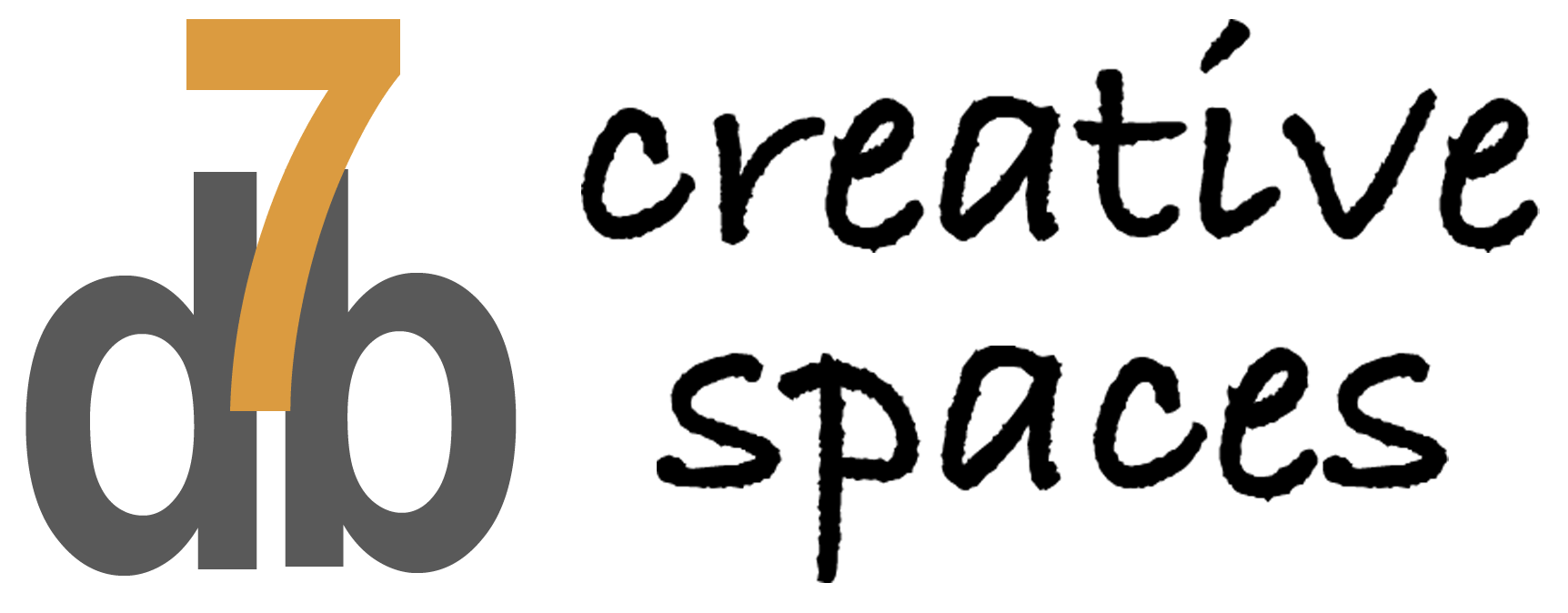Our Work
At 7 Design, we have worked with many commercial and consumer clients and our team has over 20 years expereience. We have assisted in the design process at all stages and have abundant knowledge and expertise on what is required to get the job done. We focus on house extensions and alterations, it’s our speciality and if you are thinking of a house renovation – we are here for you.
Internal Alterations, Extension replacing Conservatory in Fleet, Hampshire
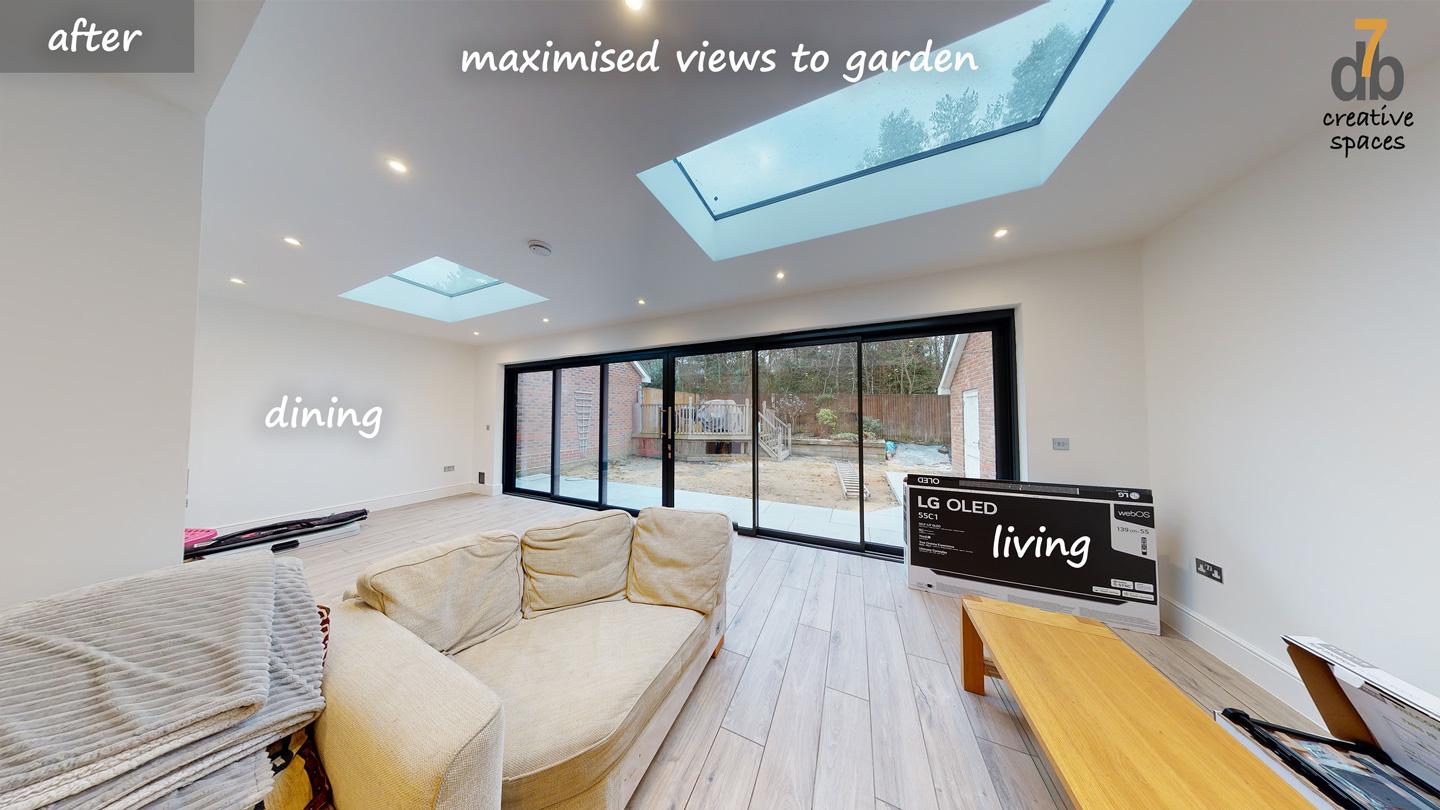
Case Study for the Internal Alterations, Extension replacing Conservatory in Fleet, Hampshire.
The homeowners, Heather and Graeme, wanted to open up and connect the ground-floor activity spaces and introduce bright, natural light to the rear of the house with a beautiful glass conservatory.
The home looks brighter and feels fresh and modern. The living space has been opened up and created space for family activities. This was a priority when redesigning the space. Opening up the previously cramped interior was paramount to give the children space to develop.
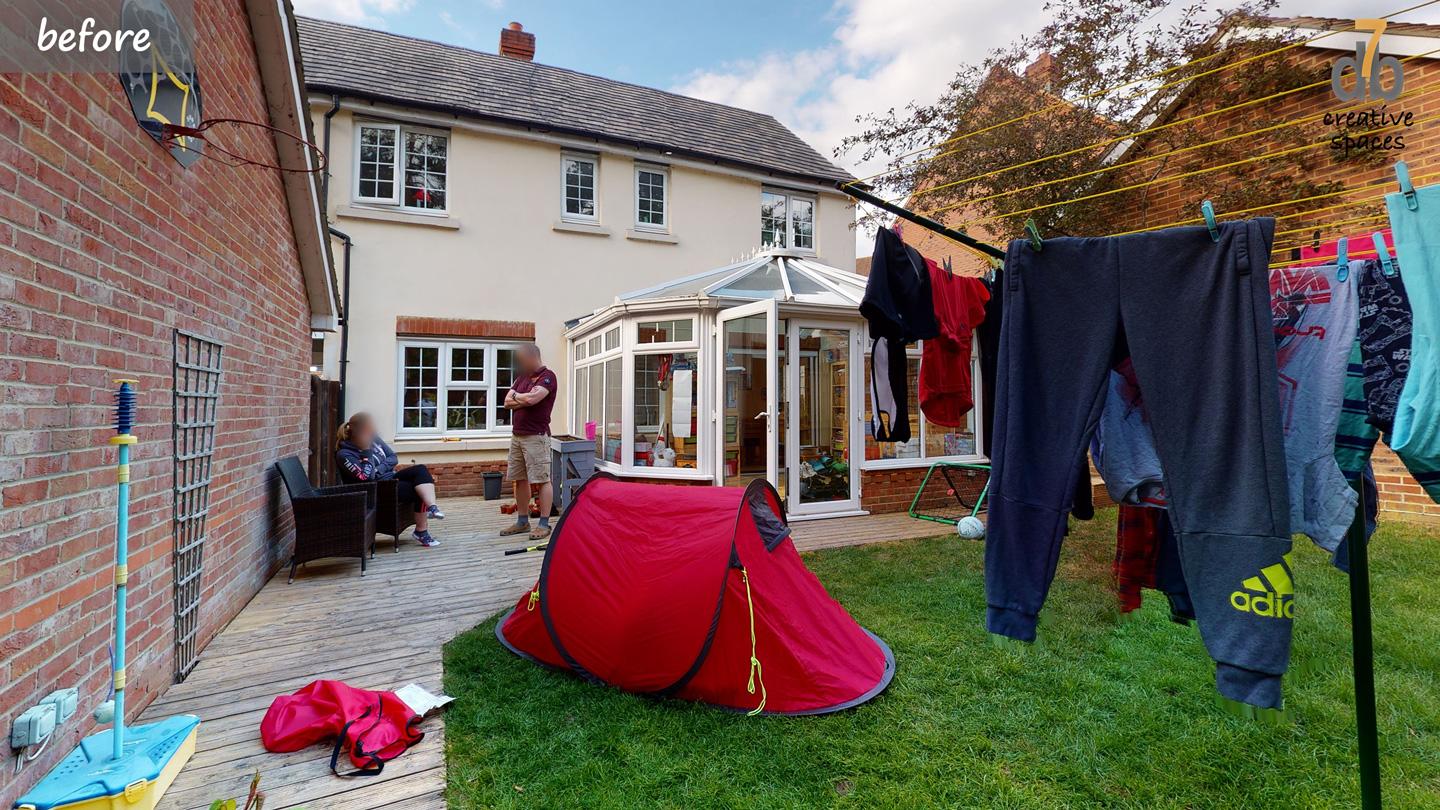
The original house design had never been adapted to the specific location and orientation, as it was part of the original estate masterplan. The conservatory was uncomfortable, either too hot or too cold, and the ground floor felt small compared to the first floor. The garden was relatively small and the conservatory only partially utilized the available ground floor space.
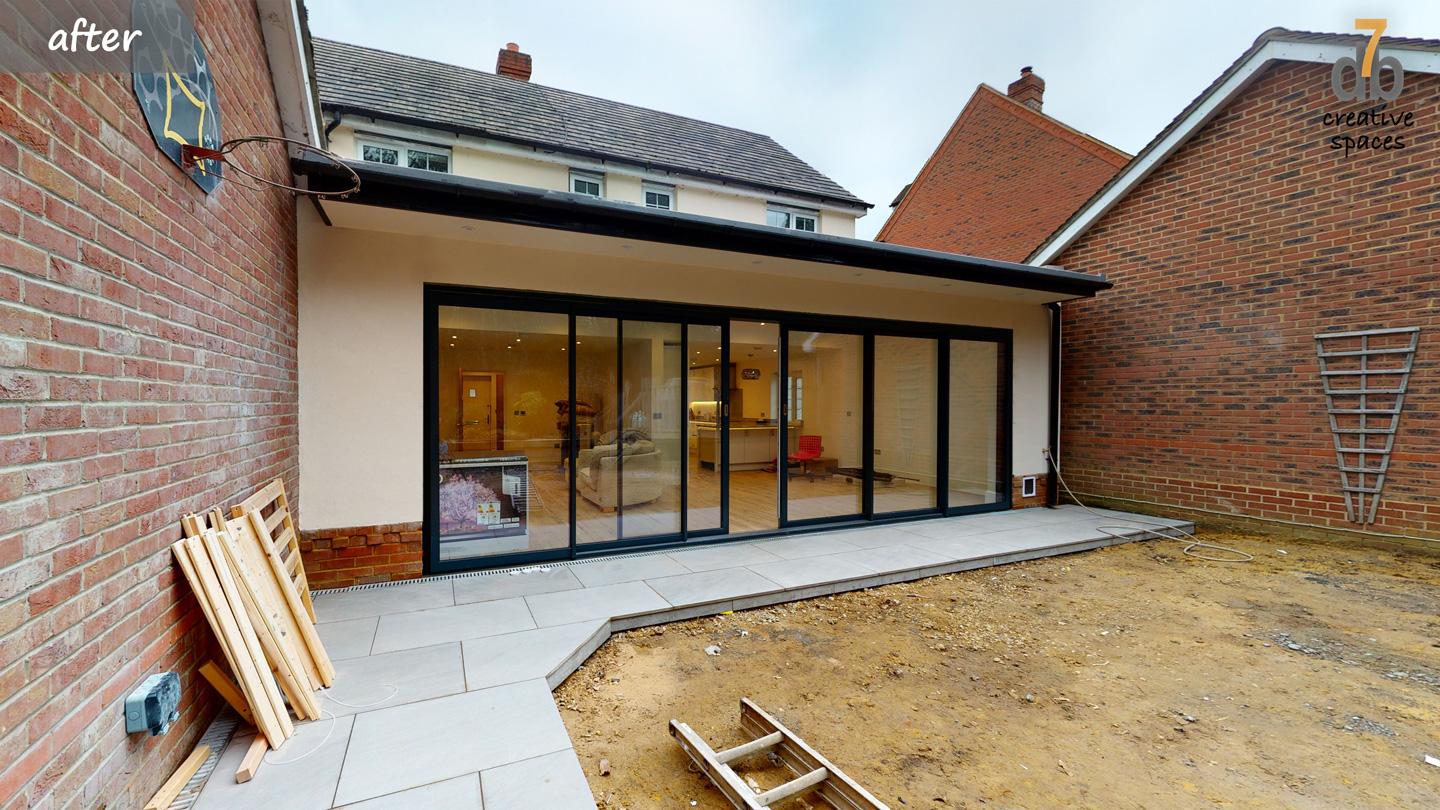
By removing the conservatory and building a habitable extension, the entire rear wall width could be fully utilized to create more usable space. This was a solution for the undersized ground floor and limited garden footprint.
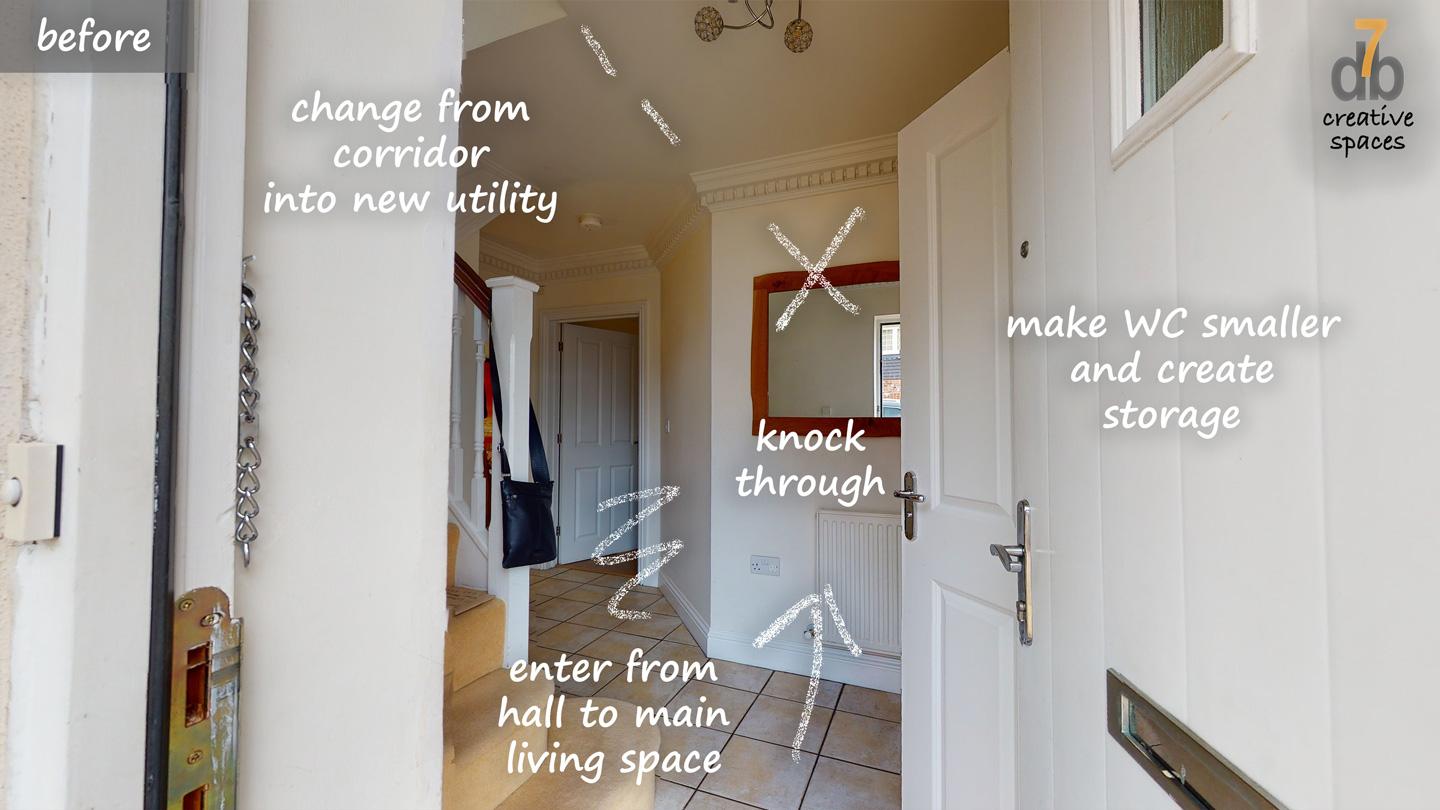
This design solution transforms the ground floor into a functional and welcoming family space. To make the most of the available space and keep costs low, the client was encouraged to consider making structural changes. The previous ground floor was cramped and dark due to a poorly placed fireplace chimney wall and entrance hall.
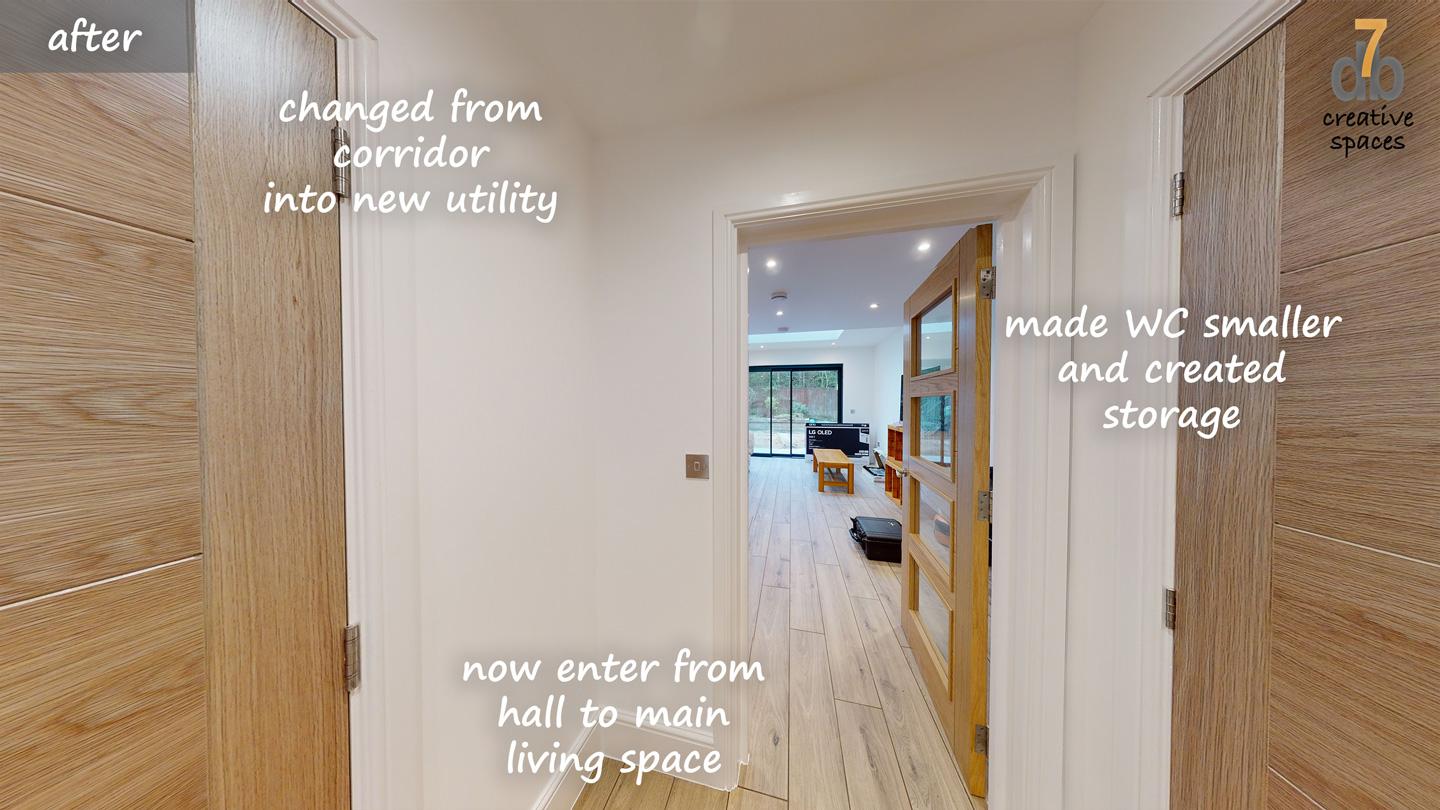
The entrance hall was transformed into a space for storage and a central utility room connected to the kitchen by removing the chimney wall. The existing toilet area was reduced to create a balanced space for both storage and usage. The issue of too many doors and excessive corridor space was also addressed in the design.
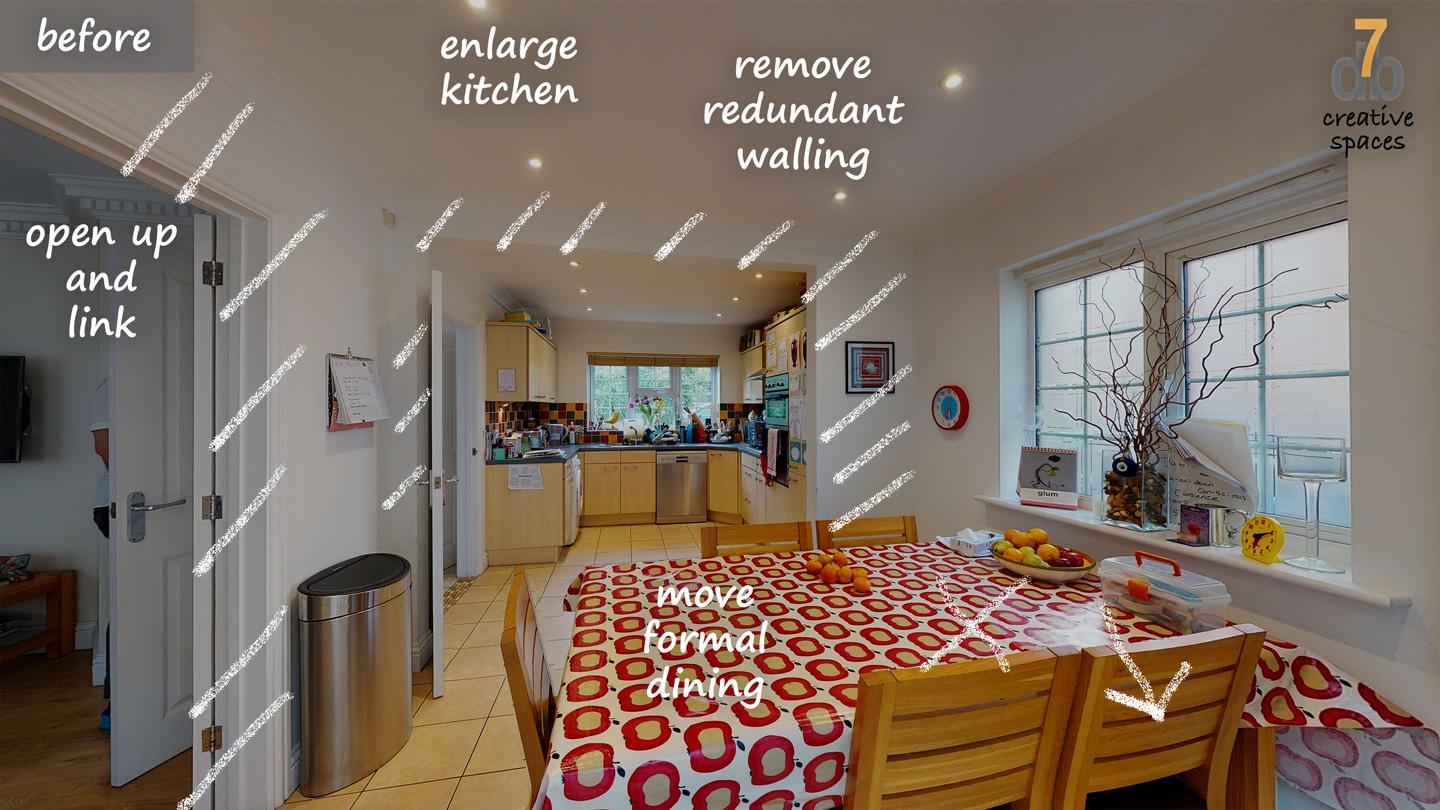
Heather and Graeme worked on the designs for our custom “dollhouse” visualization process as they progressed. They took a collaborative approach, providing transparency and giving the client insight to make key decisions. All while being guided and protected by the architect. The proposed activity spaces can be tested and adjusted in a safe “sandbox” environment. They can explore different kitchen layouts, test the heights of windows and door screens, and compare them.
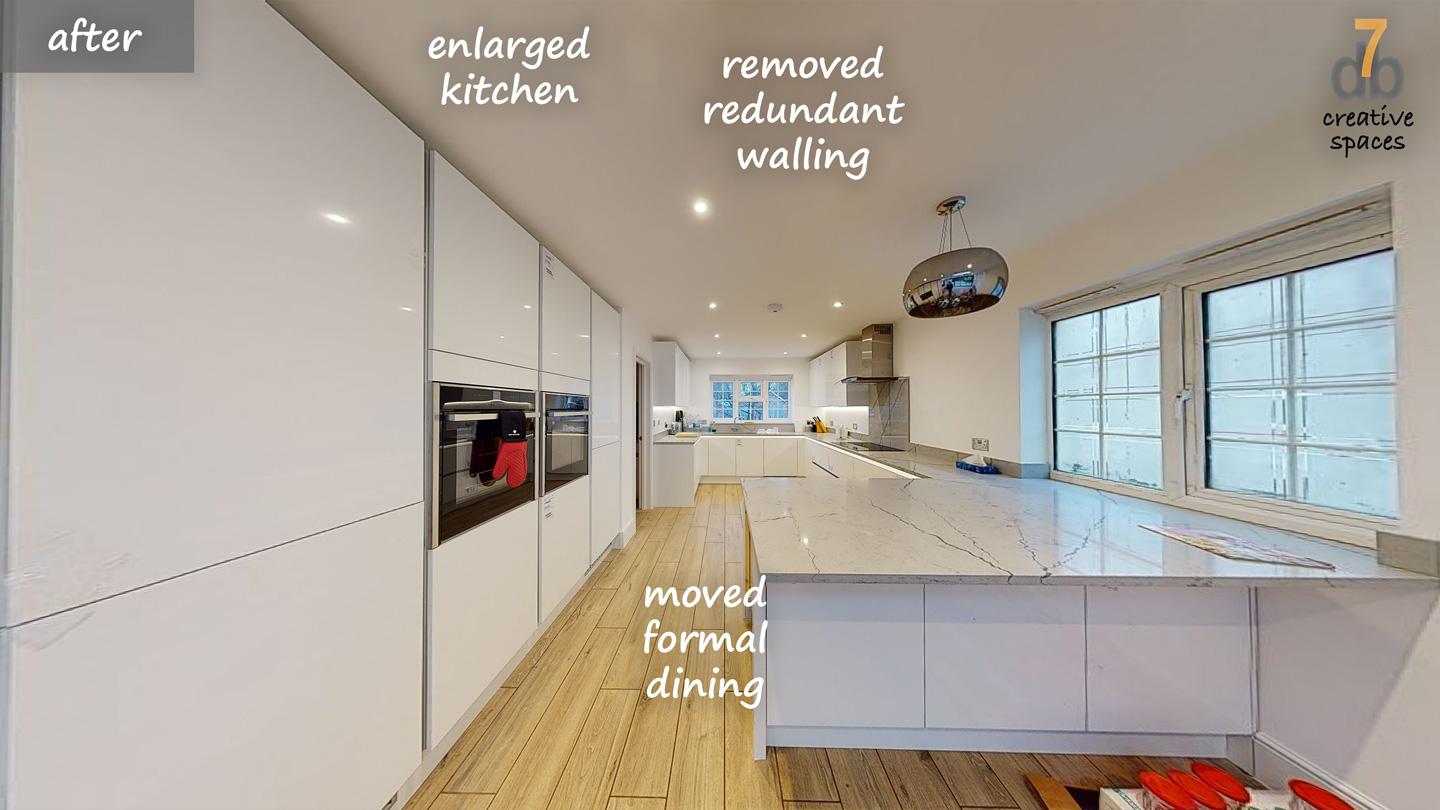
The final proposal was a “broken plan” design instead of a fully open-plan family space. A central division wall allowed for furniture placement and extra kitchen cabinets.
Upon entering the space, you now have access to the “back of house” with a new utility room and direct access from the front door hallway to the open-plan living room.
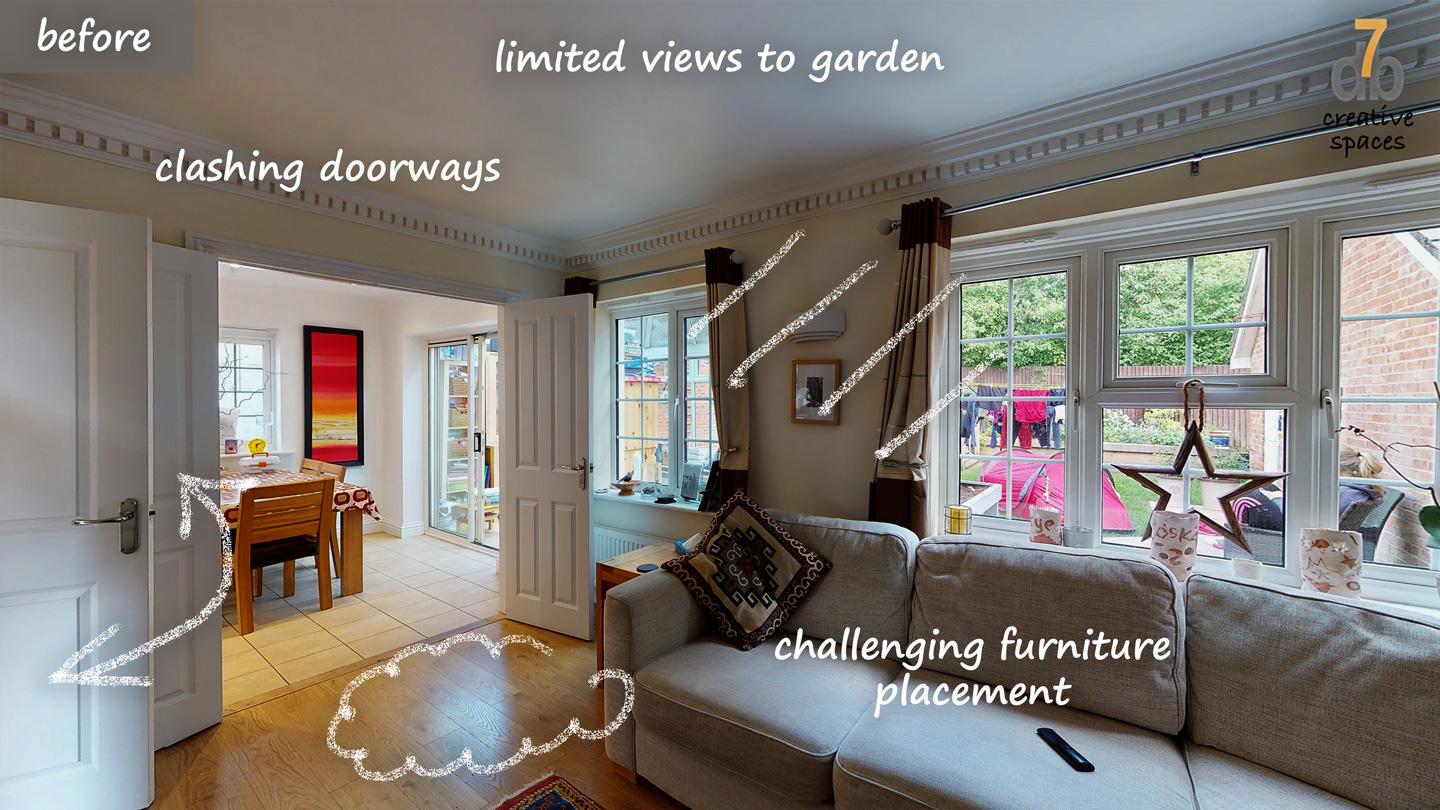
The property was suffocating. Upon entering the property’s ground floor, the oversized and oddly shaped hallway led to a cramped kitchen. Which then accessed a narrow dining room and living room. The door openings and transition corridor used up most of the available space, making the ground floor feel small and cramped despite its reasonable physical size.
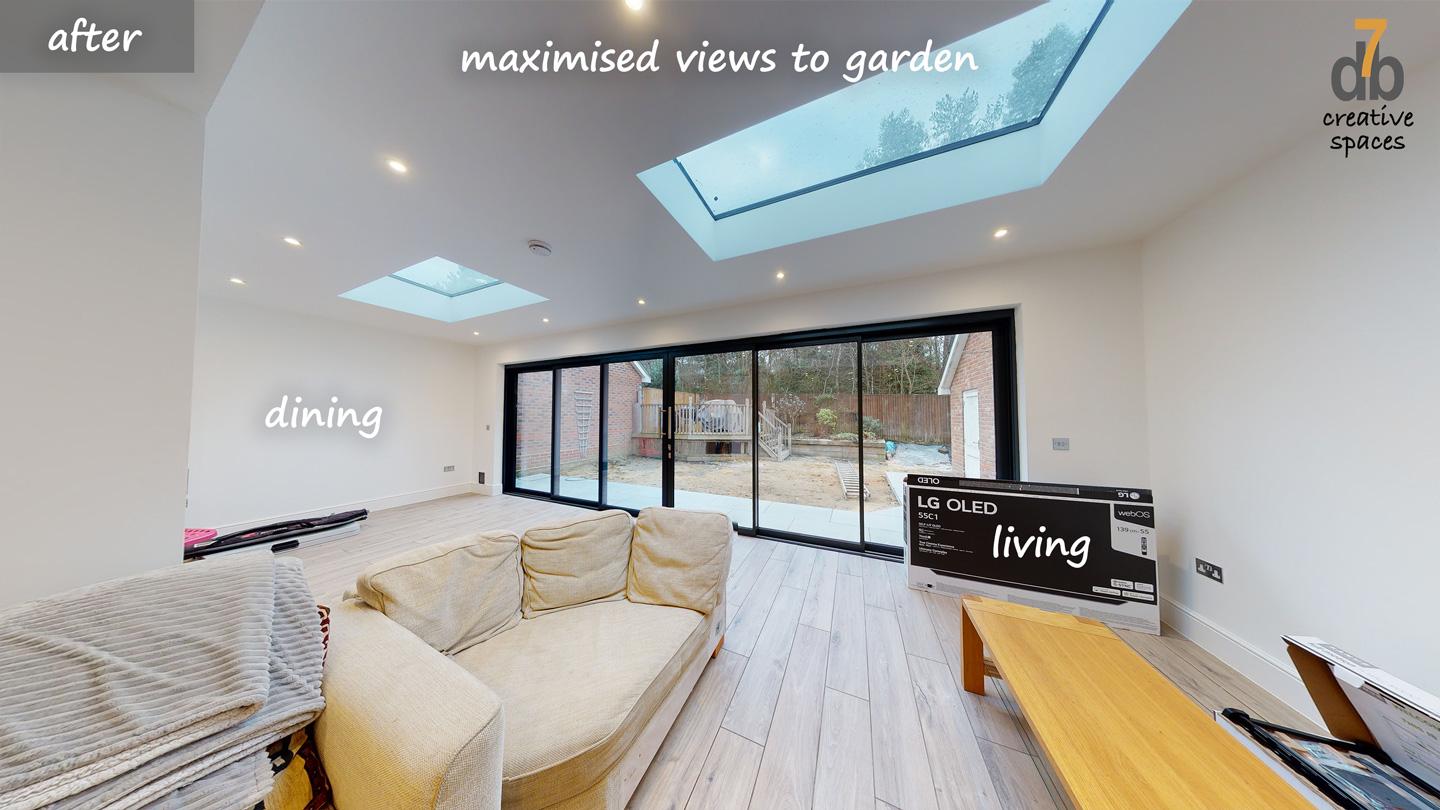
It was time to give the house some breathing room! The area felt larger and more spacious by removing unnecessary walls and re-zoning the space. The dining room was relocated by replacing the conservatory with a livable space, freeing up space for the kitchen to be re-designed and expanded.
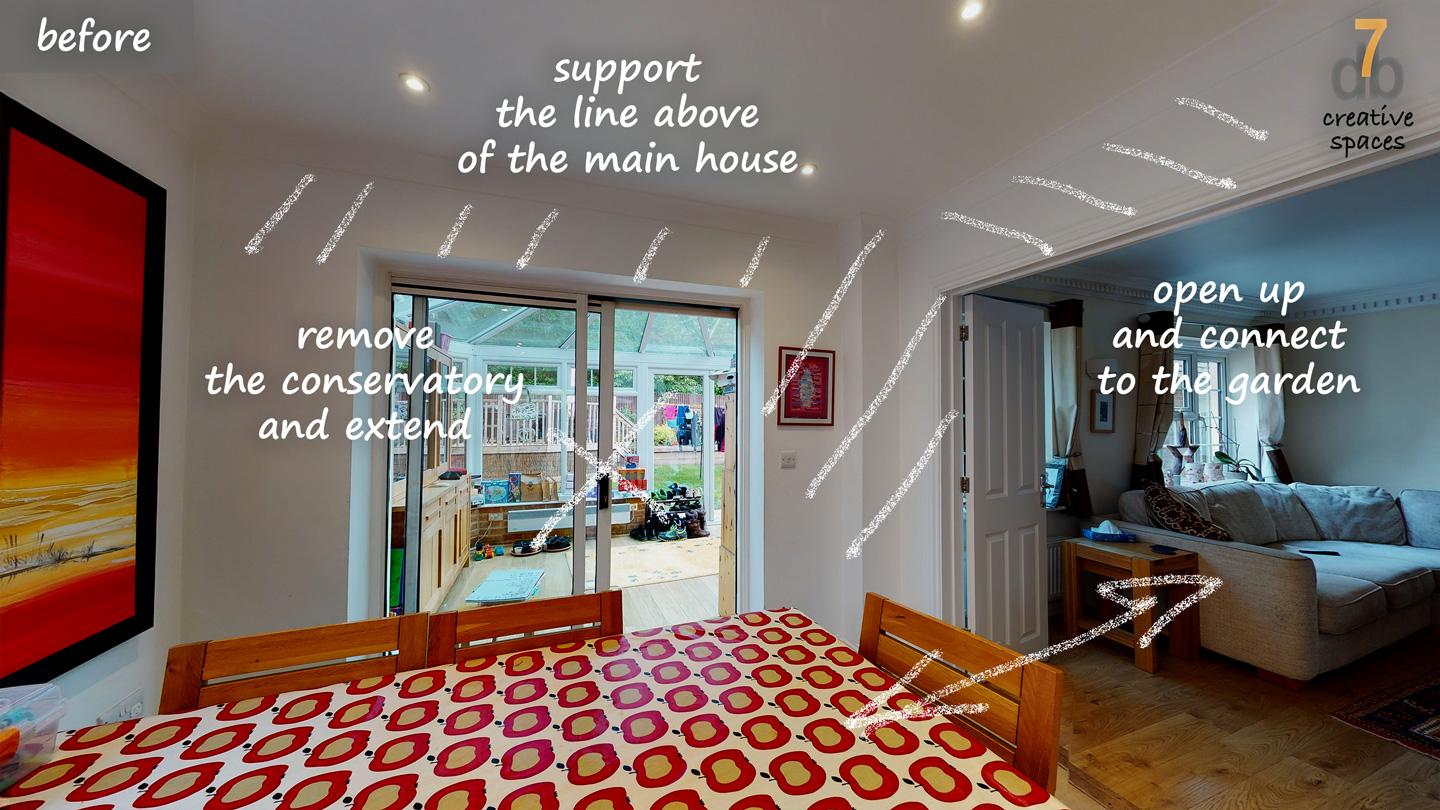
The main spaces lacked natural light due to windows placed in unusual locations in relation to the activity spaces. The outdated corridor-style kitchen was not suitable for modern family life. To update the space, each area needed to be re-zoned creatively to ensure that everything had a clear purpose.
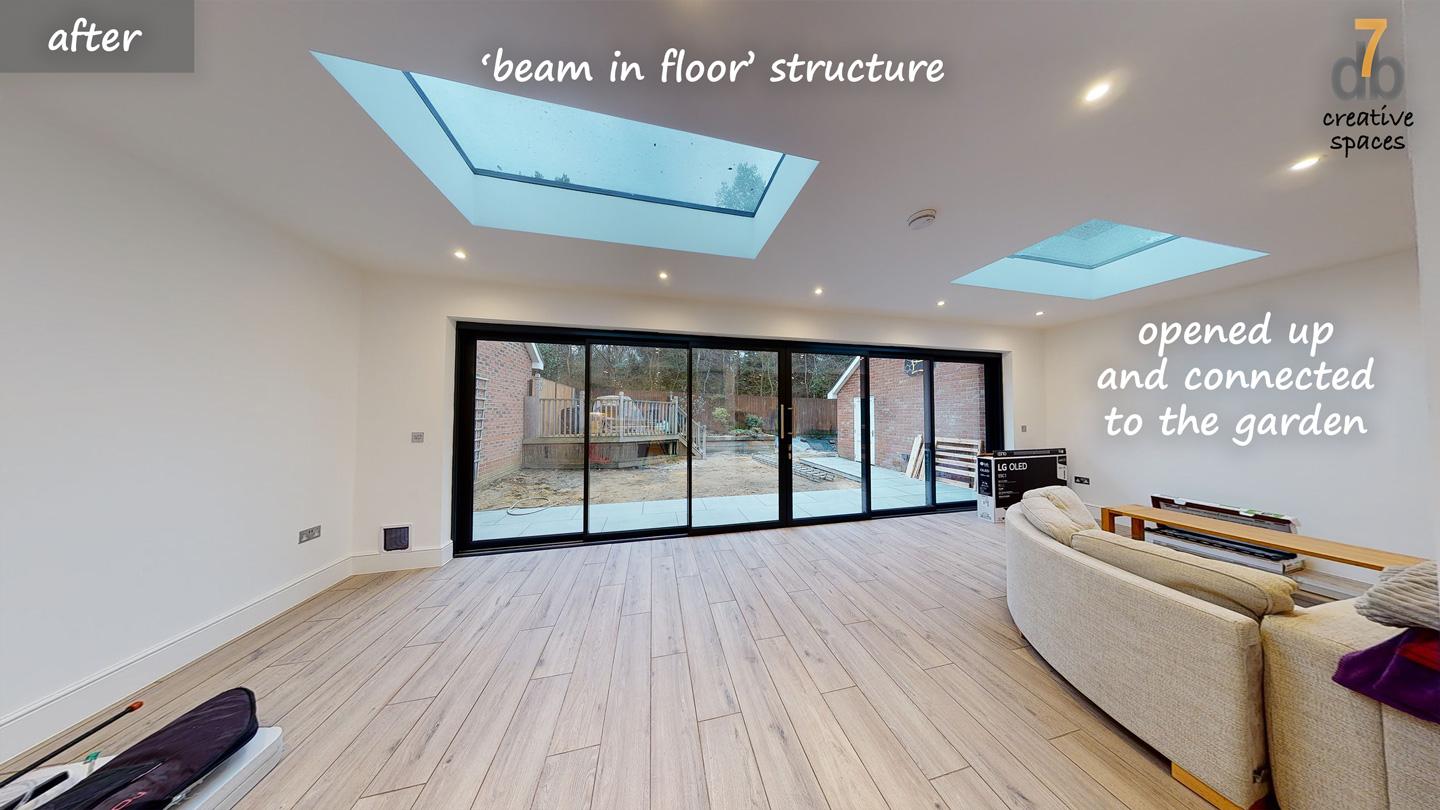
Limited space, but endless possibilities As a terrace property, side extensions were impossible. A careful and imaginative solution was needed to transform and expand the available space. Rooflights and a large opening screen connected the living space to the garden, creating a feeling of openness and limitless possibilities for furniture and activities.
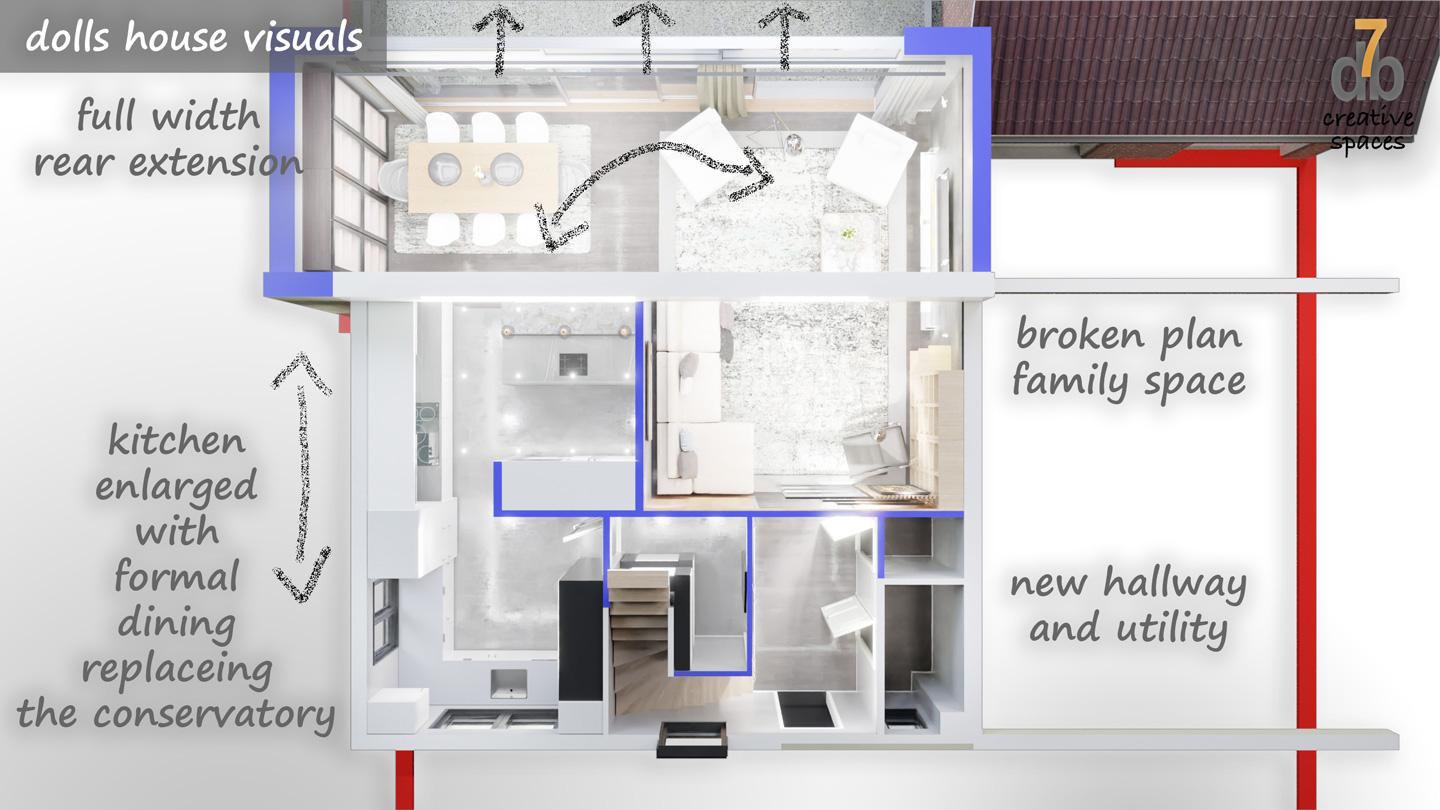
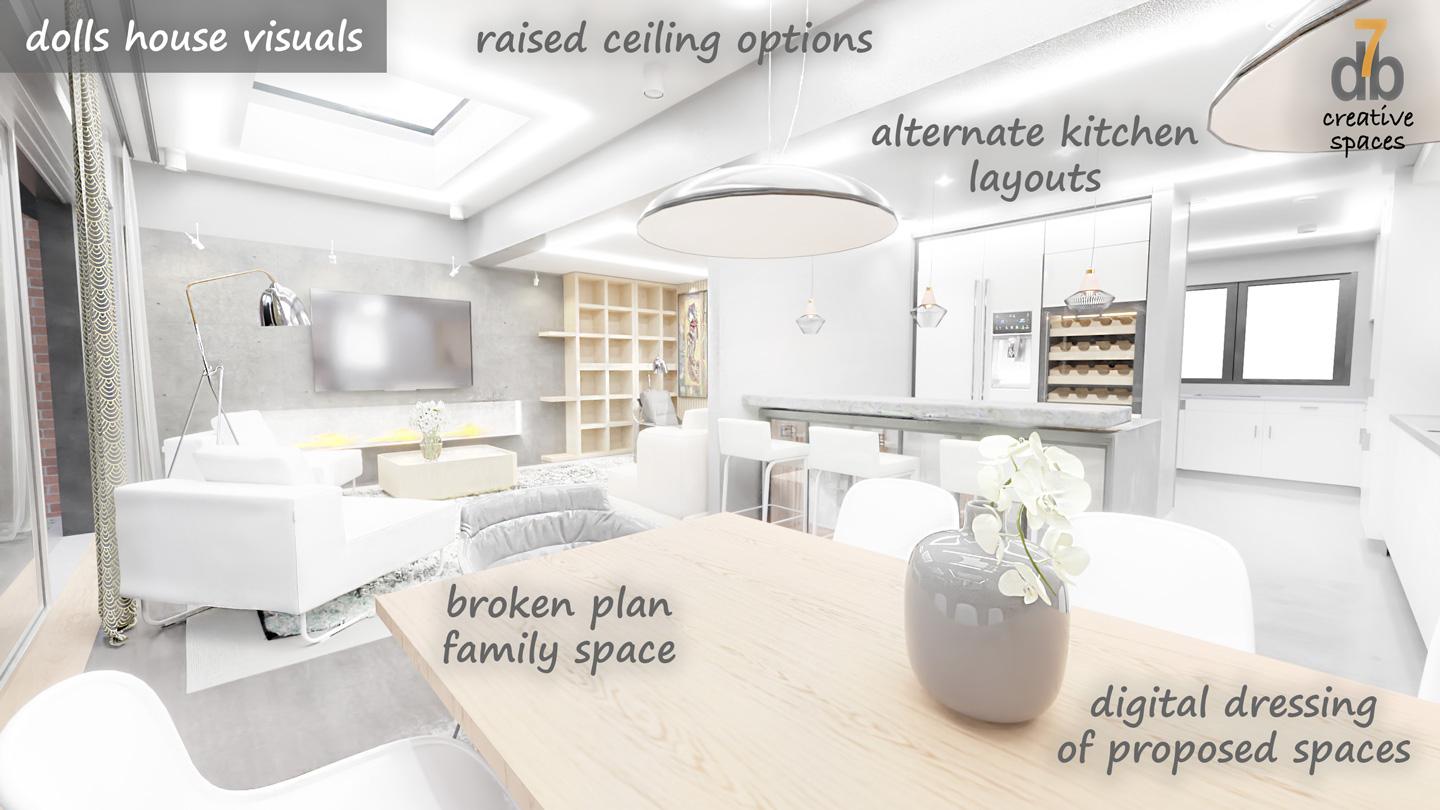
What We Do
Step 1: Scanning & Photography
Step 2: Sketch Ideas
Step 3: 3D Checks
Step 4: Planning Submission
Step 5: Technical Plans & Building Control
Step 6: Details & Performance Specifications
Step 7: Tender Process & Site Management
